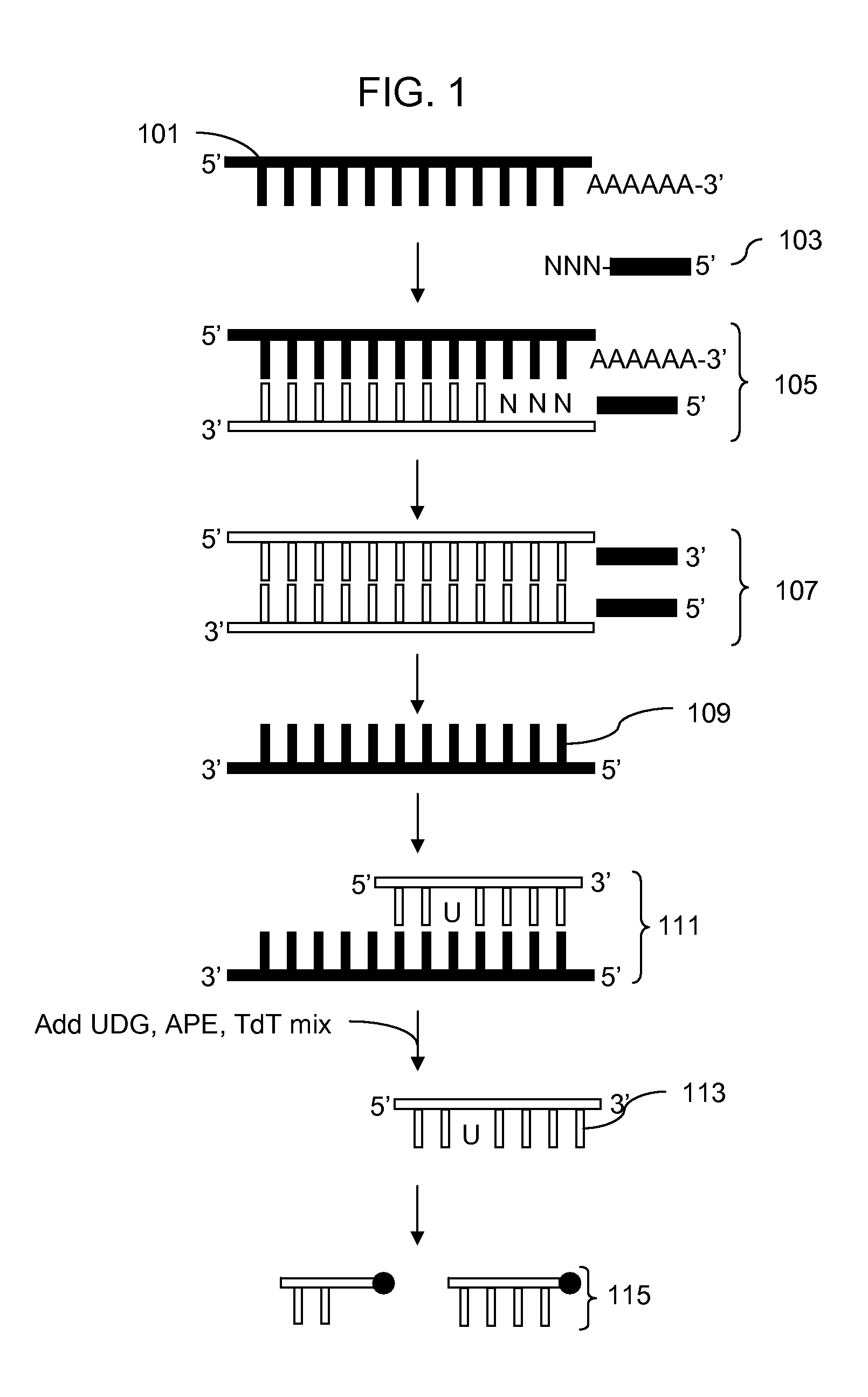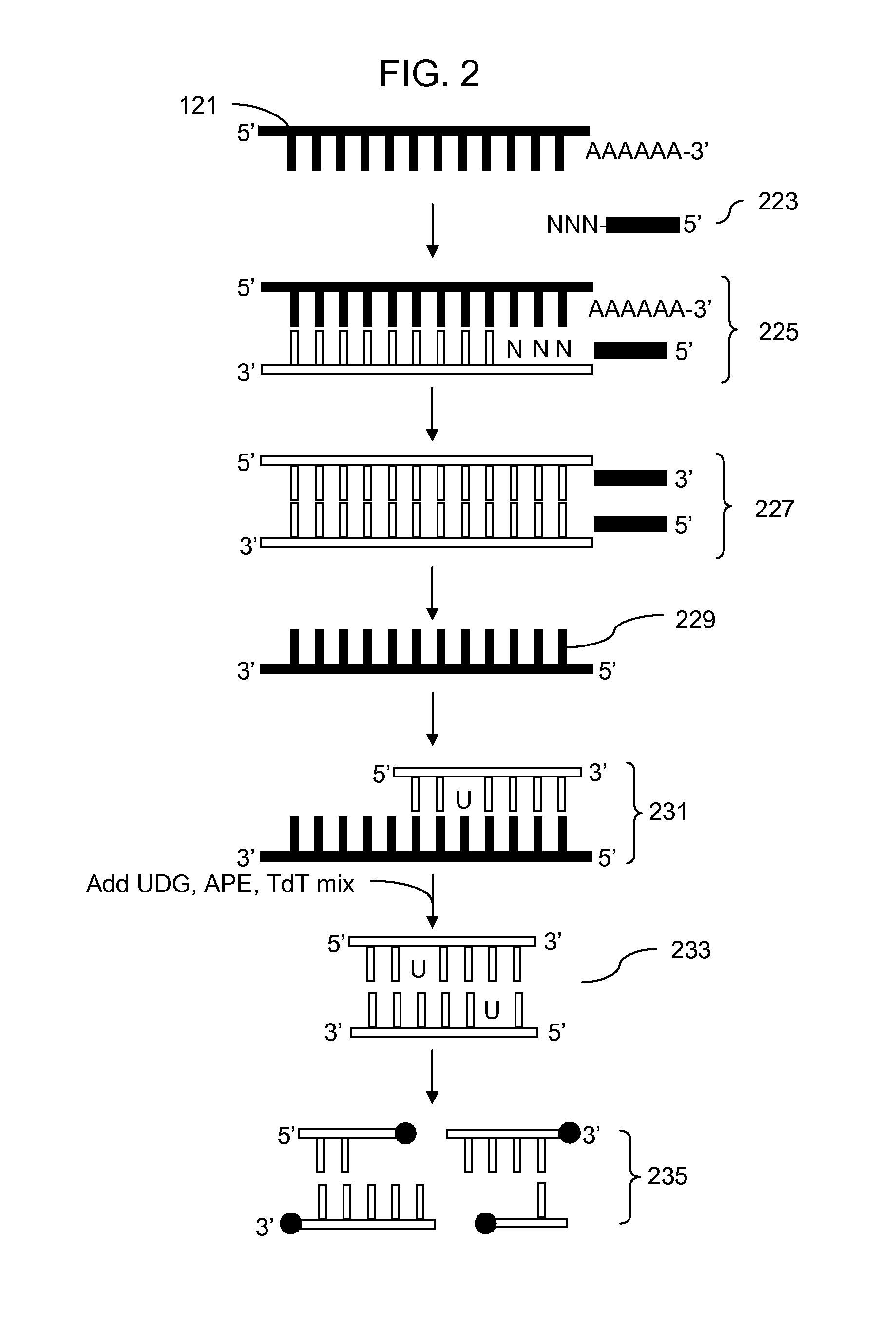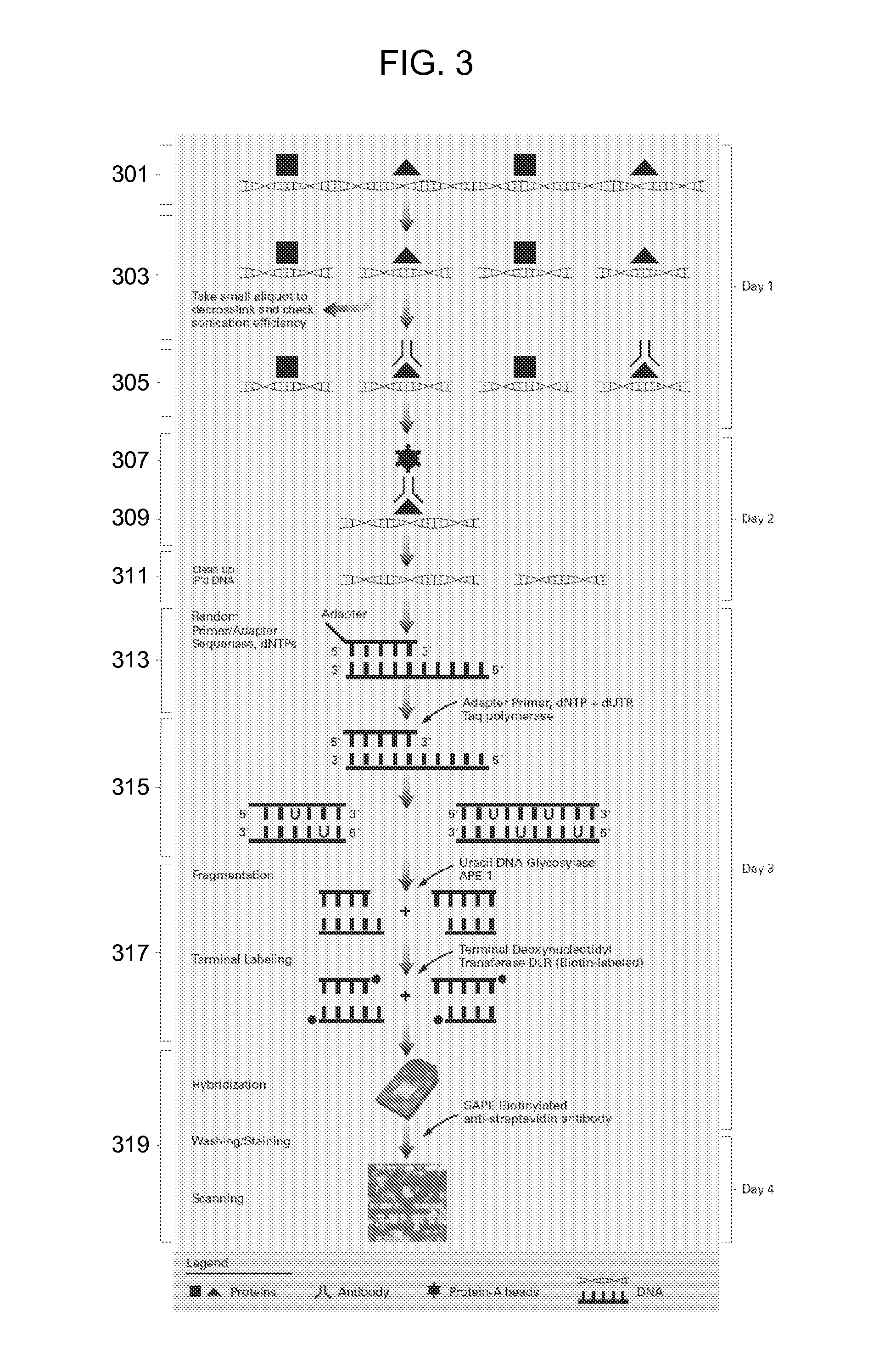Methods for fragmentation and analysis of nucleic acid
a nucleic acid and fragmentation technology, applied in the field of methods, assays and reagent kits for fragmentation and labeling of nucleic acids, can solve the problem of limiting implementation and illustrative implementation
- Summary
- Abstract
- Description
- Claims
- Application Information
AI Technical Summary
Benefits of technology
Problems solved by technology
Method used
Image
Examples
example 1
[0075] Each of 4 different TdTs was tested at two different concentrations. The reactions each had 5 μg of single-stranded cDNA from Hela total RNA with 1× NEBuffer 4 and 0.25 mM CoCl2, 1 μL UDG, 1 μL APE 1 and 1 μL 5 mM DLR in a reaction volume of 50 μl. Differing volumes of the different TdTs were added, 2 and 6 μL of Promega TdT, 4 and 8 μL of Roche TdT, 4 and 8 μl of NEB TdT and 4 and 8 μL of Invitrogen TdT. A 25 μL aliquot of each reaction sample was taken out after 60 minutes at 37° C. and heated at 70° C. for 10 minutes. The remaining 25 μL was incubated for an additional 60 minutes and then heated at 70° C. for 10 minutes. Labeling was assayed using a gel to analyze efficiency of fragmentation and a gel shift assay using NeutraAvidin to determine the efficiency of labeling.
[0076] The results indicated that using these reaction conditions the Promega and Roche TdT enzyme solutions were most efficient at fragmentation and labeling. The enzymes from Invitrogen and NEB worked b...
example 2
[0077] The Promega TdT was tested using different buffer conditions. Each reaction incuded 5 μg single-stranded cDNA prepared from Hela total RNA, 1 μL UDG, 1 μL APE 1, 1 μL 5 mM DLR and 4 μL Promega TdT in a total reaction volume of 50 μL. The buffer conditions were either 1× promega TdT buffer with 1 mM CoCl2 or NEBuffer 4 with 1 mM CoCl2. After 60, 90 or 120 minutes of incubation at 37° C. 10 μL of each reaction was removed and incubated at 70° C. for 10 minutes. Fragmentation and labeling was assayed by gel and gel shift as above.
example 3
Single Step Fragmentation and Labeling of Prokaryotic Sample
[0078] A sample of 10 μg of E. coli total RNA was amplified using the prokaryotic amplification protocol (see Affymetrix GeneChip Expression Technical Manual Section 3 P / N 701030 Rev 5). A mixture of dNTP and dUTP was used for 1st strand cDNA synthesis and the single stranded cDNA was cleaned using a column. The uracil containing cDNA was treated either with (1) the standard fragmentation and labeling protocol used for sWTA (separate fragmentation and labeling steps), (2) a one step fragmentation and labeling reaction using NEBuffer 4 and 1 mM CoCl2 for 60 or 90 minutes or (3) one step fragmentation and labeling using Promega TdT buffer with 1 mM CoCl2 for 60 or 90 minutes. The samples were hybridized to an E. coli 2.0 GeneChip Array. The results were analyzed to compare percent present calls, call concordance and signal correlation. Both one step fragmentation methods (2) and (3) were comparable to two step methods. The o...
PUM
| Property | Measurement | Unit |
|---|---|---|
| volume | aaaaa | aaaaa |
| volume | aaaaa | aaaaa |
| pH | aaaaa | aaaaa |
Abstract
Description
Claims
Application Information
 Login to View More
Login to View More - R&D
- Intellectual Property
- Life Sciences
- Materials
- Tech Scout
- Unparalleled Data Quality
- Higher Quality Content
- 60% Fewer Hallucinations
Browse by: Latest US Patents, China's latest patents, Technical Efficacy Thesaurus, Application Domain, Technology Topic, Popular Technical Reports.
© 2025 PatSnap. All rights reserved.Legal|Privacy policy|Modern Slavery Act Transparency Statement|Sitemap|About US| Contact US: help@patsnap.com



